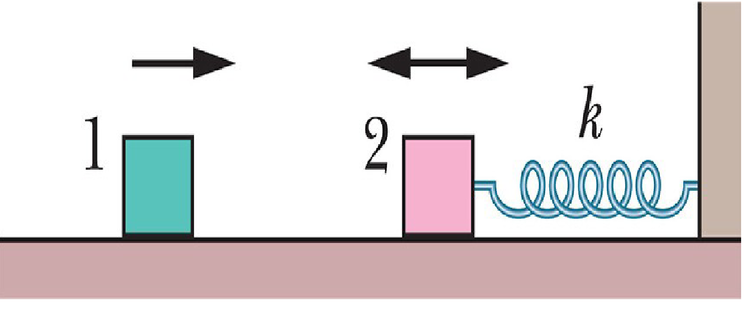Another
 In the Fig , block 2 of mass
kg oscillates on the end of a spring in SHM with a period of
ms. The position of the block is given by
. Block
of mass
kg slides toward block
with a velocity of magnitude
m/s, directed along the spring’s length.The two blocks undergo a completely inelastic collision at time
ms. (the duration of the collision is much less than the period of motion.) What is the amplitude of the SHM after the collision?
In the Fig , block 2 of mass
kg oscillates on the end of a spring in SHM with a period of
ms. The position of the block is given by
. Block
of mass
kg slides toward block
with a velocity of magnitude
m/s, directed along the spring’s length.The two blocks undergo a completely inelastic collision at time
ms. (the duration of the collision is much less than the period of motion.) What is the amplitude of the SHM after the collision?
The answer is 0.024.
This section requires Javascript.
You are seeing this because something didn't load right. We suggest you, (a) try
refreshing the page, (b) enabling javascript if it is disabled on your browser and,
finally, (c)
loading the
non-javascript version of this page
. We're sorry about the hassle.
The question should specify the final unit of the answer